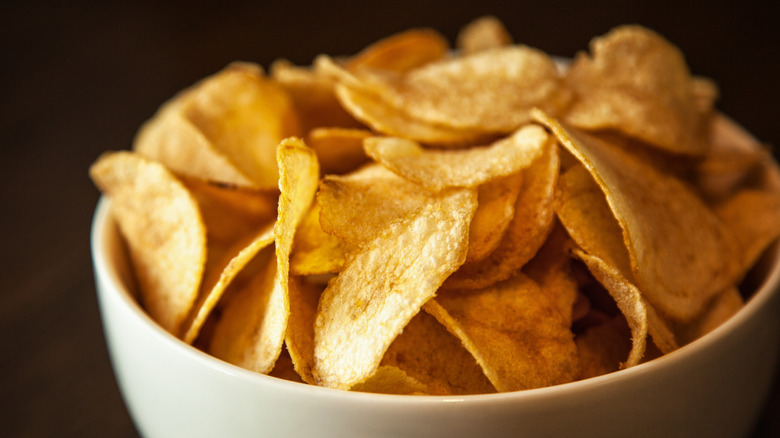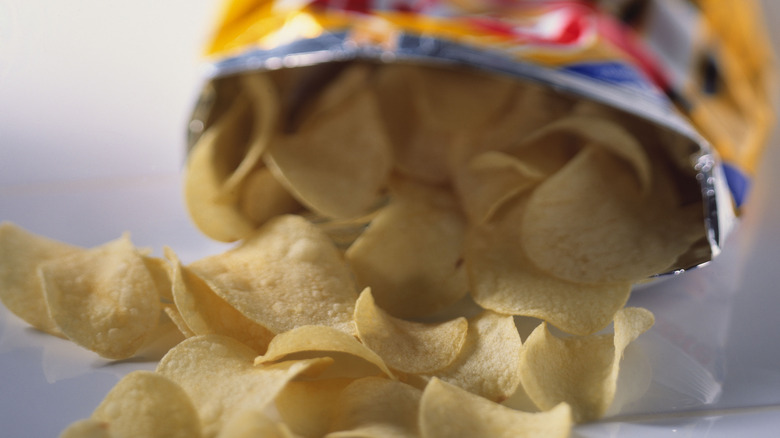The Scientific Reason We Enjoy Snacking On Crunchy Potato Chips
Eating is a deeply sensory experience — in more ways than you might think. While we all know that taste, smell, appearance, and texture matter a lot, most people don't stop to consider the way food sounds. But the pros who make the food we eat, whether they're fine-dining chefs or food scientists formulating recipes in labs, understand just how crucial it is.
Just ask William E. Lee, who dedicated years of his life to researching food sounds. Before joining the faculty at the University of South Florida, Lee worked as a food sensory researcher at Procter & Gamble, where he became a leading expert in potato chip crunch. His 1990 paper, Analysis of Food Crusing Sounds During Mastication: Total Sound Level Studies — which is a mouthful in and of itself — showed that people enjoy noisy chips more. Participants who wore white-noise headphones to cancel out noise while they snacked, ate fewer chips overall.
Why? Researchers think that the crunch keeps things interesting, whereas quiet foods just don't provide enough stimulation. People like to experience variations when they eat, which is why it's so easy to gorge yourself on Thanksgiving dinner or the plethora of options at a small-plate restaurant. As Lee told Discover Magazine, "The eating experience becomes boring more quickly — or remains exciting less long." Auditory cues help hold your attention and keep you craving more, which is why it's so easy to absent-mindedly finish off a full-size bag of Lay's in one sitting.
We associate sound with freshness
Entertainment value isn't the only reason we enjoy crispy chips, though. A 2003 study published in the Journal of Sensory Studies hooked participants up to headphones and asked them to snack on potato chips while ranking their perceived freshness in real time. As participants munched away, researchers subtly adjusted the volume of the feedback loop. The study found that participants thought noisy chips were the freshest, whether or not they actually were.
Experts theorize that the association with freshness could date back to our earliest ancestors. A slimy texture, which can indicate that food has gone off, tends to gross people out — as anyone with an aversion to okra, eel, or avocado can attest. Crunchy carrots, crisp apples, and snappy celery, meanwhile, signal fresh and nutritious food.
Crunch. Crisp. Snap. Starting to feel hungry? That's because simply reading food-related onomatopoeia (words that imitate sounds) could be enough to influence your perception of food, as a 2021 study published in Food Quality and Preference suggested. But before you raid the snack cabinet for potato chips, grab a pair of noise-canceling headphones unless you want to eat the whole bag.

